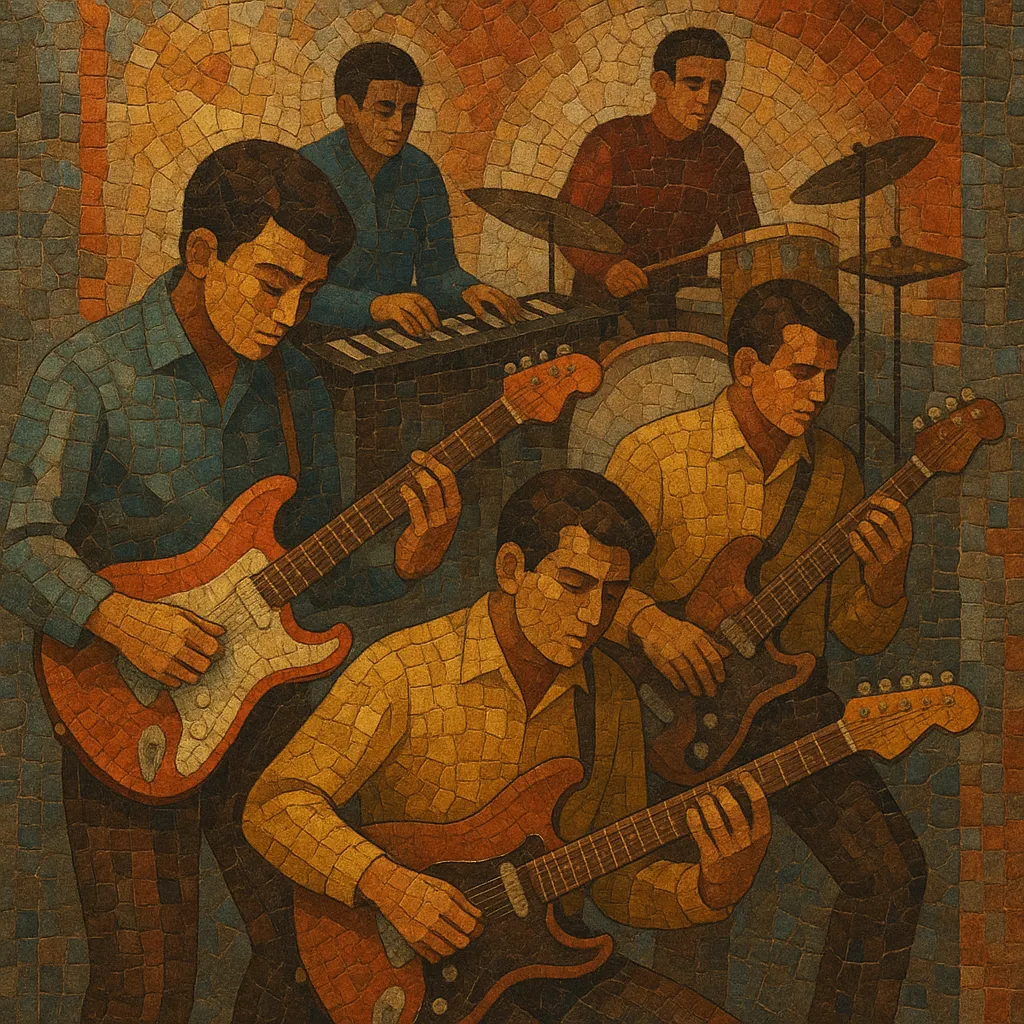Wong shadow is a Thai guitar‑band style that emerged in the 1960s, named after British group The Shadows and built around clean, melodic lead guitar, rhythm guitar, bass, organ, and drum kit.
It blends early rock & roll, beat-group pulse, and surf-rock tones (echo, spring reverb, tremolo picking) with Thai melodic sensibilities, often performing instrumental pieces and Western/Thai pop covers for dancehalls and clubs.
The sound is tight, danceable, and melody-forward, acting as a bridge between Western combo rock and later Thai pop/rock "string" band traditions.
Wong shadow (วงแชโดว์) took shape in Thailand in the 1960s, when local “combo” bands—literally “ensembles” or "wong"—absorbed the influence of The Shadows, The Ventures, and early rock & roll/beat music. The style crystallized around instrumental tunes, guitar-led melodies, and surf/beat dance rhythms, serving hotels, nightclubs, and GI venues during the Vietnam War era.
As Thailand’s urban nightlife grew, wong shadow bands became house acts in ballrooms and clubs, adding organs and tighter vocal harmonies while retaining the instrumental spotlight. Their repertoire mixed Western hits, Thai-language pop, and instrumental numbers, helping modernize local pop presentation and setting the template for “string” bands that would dominate Thai pop/rock in the 1970s.
By the mid-to-late 1970s, fully vocal-centric Thai pop, funk, and rock groups evolved directly from wong shadow’s combo format. The clean, melodic guitar language, garage-surf energy, and dance-friendly grooves fed into Thai rock and later indie scenes. In the 2000s–2010s, crate-digger compilations and reissues renewed interest in the genre, spotlighting its role in connecting Western combo rock with Thai popular music.
Use a classic combo: lead guitar (single-coil preferred), rhythm guitar, electric bass, combo organ (e.g., Farfisa-style), and a small drum kit. Aim for clean guitar tones with spring reverb and occasional tape/analog echo; employ gentle tremolo and surf-style vibrato.
Favor steady 4/4 dance pulses derived from beat, twist, and surf (110–150 BPM). Drums should keep a crisp backbeat with tight hi-hat patterns and occasional tom-driven surf rolls. Bass lines are simple, walking or ostinato-style, interlocking with the kick.
Center the arrangement on a singable lead-guitar melody. Use major and minor pentatonic scales, early rock & roll changes (I–vi–IV–V, I–IV–V), and occasional modal color. Integrate Thai melodic contours by ornamenting phrases (slides, bends) and using stepwise motion.
Common forms are short instrumental themes (AABA/ABAB) with a middle-8 variation or organ solo. Keep parts concise and hook-driven. If adding vocals, treat them as an additional chorus hook; the lead guitar remains the primary voice.
Record live as a tight ensemble, keeping arrangements uncluttered. Emphasize room ambiance and spring reverb, panned guitars, and a present but not overdriven rhythm section to preserve the style’s bright, danceable clarity.


